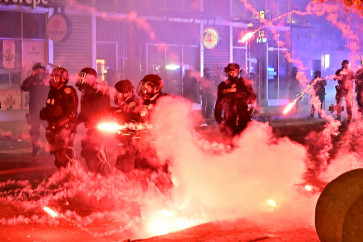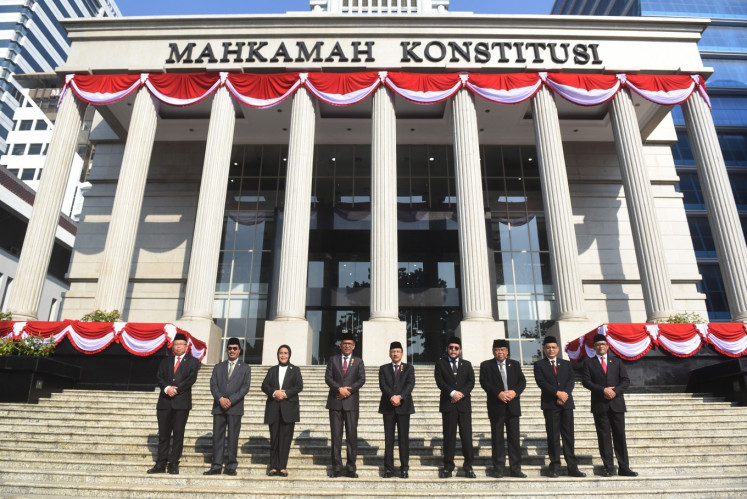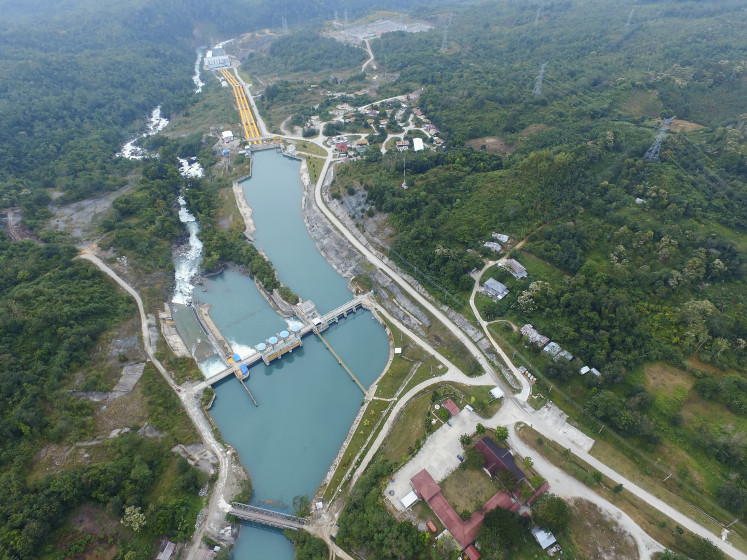Popular Reads
Top Results
Can't find what you're looking for?
View all search resultsPopular Reads
Top Results
Can't find what you're looking for?
View all search resultsSatellite imagery, the new weapon to fight forest fires
Red alert: Hot spots that occurred in forests throughout the archipelago are monitored in the REDD+ situation room in Jakarta on Wednesday
Change text size
Gift Premium Articles
to Anyone

R
span class="caption">Red alert: Hot spots that occurred in forests throughout the archipelago are monitored in the REDD+ situation room in Jakarta on Wednesday. The facility aims to help authorities detect and act on forest fires, which usually break out during the dry season. JP/AWO
As a senior expert at the newly-established Reducing Emissions from Deforestation and Forest Degradation Agency (BP REDD+), Erwinsyah is responsible for monitoring hot spots in the country's forests and sending alerts to relevant agencies and local officials about possible land and forest fires.
The job may look daunting, but Erwinsyah said he was now able to handle it directly from his home through his laptop, thanks to the introduction of Global Forest Watch-Fires (GFW-Fires), an online platform equipped with, among other features, high-resolution satellite imagery, real-time fire alerts from the National Aeronautics and Space Administration (NASA) and the National Oceanic and Atmospheric Administration (NOAA) and land-use and concession maps to monitor and respond to land and forest fires.
'One day during the recent Idul Fitri holiday, I accidentally left my laptop at home, but was still able to work from an Internet café,' Erwinsyah told The Jakarta Post on Tuesday.
Having been in operation since June with the support from the US-based environment and development think tank, the World Resource Institute (WRI), GFW-Fires has become a part of the agency's forest fire monitoring system (KMS), an integrated system that provides near-real-time information about forest and land fires in the country for related institutions, including the National Disaster Mitigation Agency (BNPB), the Forestry Ministry, the police and local administrations.
'Just imagine a village resident who beat bamboo tubes to warn others about an ongoing fire. This system works just like a giant bamboo tube that alerts officials and agencies responsible for handling fires on a massive scale,' BP REDD+ head Heru Prasetyo said.
Earlier this week, the Post paid a visit to the agency's headquarters in Central Jakarta to see the situation room from where the agency manages its forest fire monitoring system.
In the 30-square-meter room, visitors can monitor the recent developments of hot spots in any forest area in the country from several LCD screens. A bubble sign will then appear to locate every area where a hot spot is found, along with information about its size, owner of the concession area and other statistics.
Adjacent to the situation room is a control room where eight officers work to manage databases, analyze satellite images and prepare incident reports, among other tasks.
'High-resolution satellite images and our analysis of the historical patterns of fires in a specific area can actually be used by law enforcers as evidence to build a solid case against those illegally setting the forest fires,' the agency's deputy head for technology, system and surveillance, Nurdiana Darus, said, adding that the monitoring facility could also be accessed from outside the headquarters using a user name and password.
Indonesian farmers consider slash-and-burn to be a cheap and fast method to clear forested land for agricultural use. Many plantation firms have also allegedly used such methods to reduce costs.
Almost every year, forest and bush fires occur in several regions, particularly in Riau and West Kalimantan provinces, resulting in dense smoke drifting across the border and leading to strong protests from neighboring countries, including Malaysia and Singapore.
The use of satellite imagery is expected to help law enforcers locate such illegal clearing activities.
A group of hot spots that develop against the wind direction, for example, may indicate an ongoing forest burning activity, Erwinsyah said.
Launched in 2007, REDD+ is a mechanism aimed at slowing anthropogenic climate change by providing financial incentives to protect forests as they can absorb carbon from the atmosphere. Deforestation and forest degradation contribute to up to 15 percent of global greenhouse gas emissions, studies show.
Established late last year, BP REDD+ is responsible for supporting the president in implementing REDD+ in this country.









